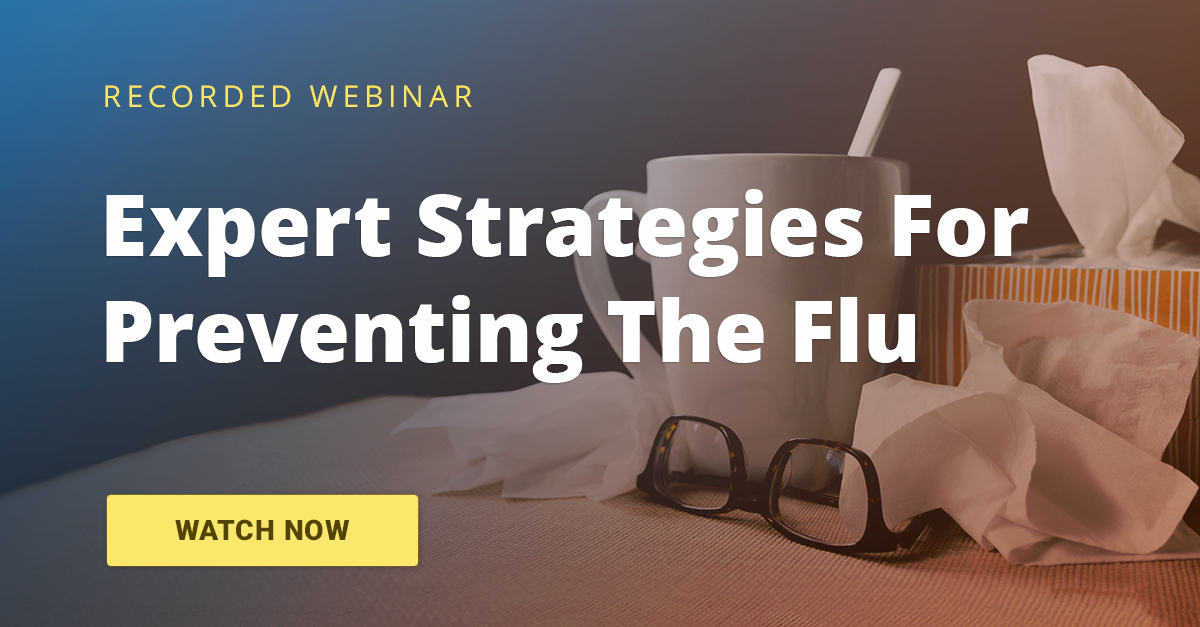Why Flu Shots Are An Organization’s Best Defense
The Centers for Disease Control and Prevention (CDC) strongly advocates for flu prevention measures in businesses and homes across the United States. In fact, the CDC advises that everyone 6 months and older should receive a yearly flu vaccine.
While the forecast for 2018-19 may be less severe than the prior ones, businesses still need to prepare and protect their employees because the flu severely impacts workplace productivity. According to the CDC, the flu causes U.S. employees to miss an average of 17 million workdays, at a cost of $7 billion per year in sick days and lost productivity.
Last Year’s Record-Setting Flu Season
The 2017-18 flu season was among the most widespread in recent years. There were nearly 152,000 reported cases, and a total of 28,543 laboratory-confirmed influenza-associated hospitalizations were reported between Oct. 1, 2017, and March 31, 2018.
Additionally, the highest rate of hospitalization was among adults over the age of 65, followed by adults 50-64 years old.
“There was a strain we hadn't seen for a while, as well as having both 'A' and 'B' strains circulating at the same time,” said public health expert Meg Nash during a recent AlertFind webinar. “The flu we saw in Australia had time to shift its genetics by the time it got to the U.S. It doesn't take much to change the strain.”
How Flu Shots Work And Prevent The Spread Of Disease
Influenza vaccines, or flu shots as they’re commonly known, work by stimulating the body's immune system to make antibodies to the flu virus. These antibodies then effectively fight off infections from "live" flu viruses. As a result, flu shots either greatly reduce the severity of seasonal flu infections or prevent people from developing an infection in the first place.
“The one thing that flu shots do, regardless of whether it’s a perfect match for the strain, is give you some protection, so it does help your immune system. It may not prevent you from getting the flu, but it would result in a much more mild flu,” Nash said.
“And that’s key for how long you would be able to spread it to other people, which goes right along with missing work and school and having those impacts on other organizations when you start having a large number of similar absences.”
How Businesses Can Encourage Employees To Get Flu Shots
Nash said hosting a flu clinic is one of the most effective flu prevention methods and is also one of the best and most pragmatic incentives for employees.
“Collaborate with a healthcare provider to have a professional come to your office or location to administer the shots,” Nash said. “This offers your employees direct access to the vaccine and they don't have to take time off from their jobs to get it.”
She added that incentivization programs which reward employees with extra time off or gift cards can increase participation.
“Ultimately, the less sick time they take, the bigger advantage to you as an organization. Business continuity becomes less of a worry because more workers are on-site rather than at home taking care of themselves or their families,” she said.
For more insight from Meg Nash, MPH, about how organizations can enact flu prevention campaigns and keep employees healthy during, watch AlertFind’s recent webinar, “Don't Let The Flu Disrupt Your Organization.”

You are well on your way toward protecting your staff and organization.
Take the next step toward protecting your organization by learning more about emergency notification systems and the vital role they play in your emergency preparedness plan.
